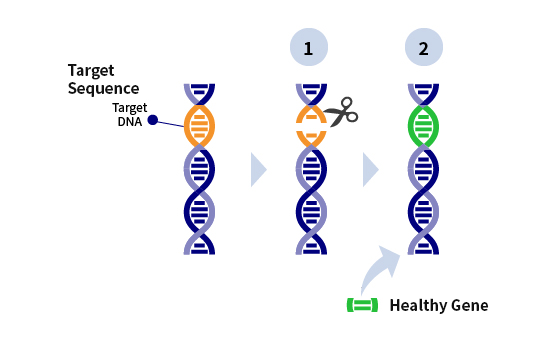What is CRISPR/genome editing?
Technology to modify a gene by cutting it at a target site
Genome editing is a technology that modifies a gene by cutting the double strand of DNA at a specific point and either 1) destroying the target gene or 2) repairing it by inserting a different sequence at the point of breakage.


